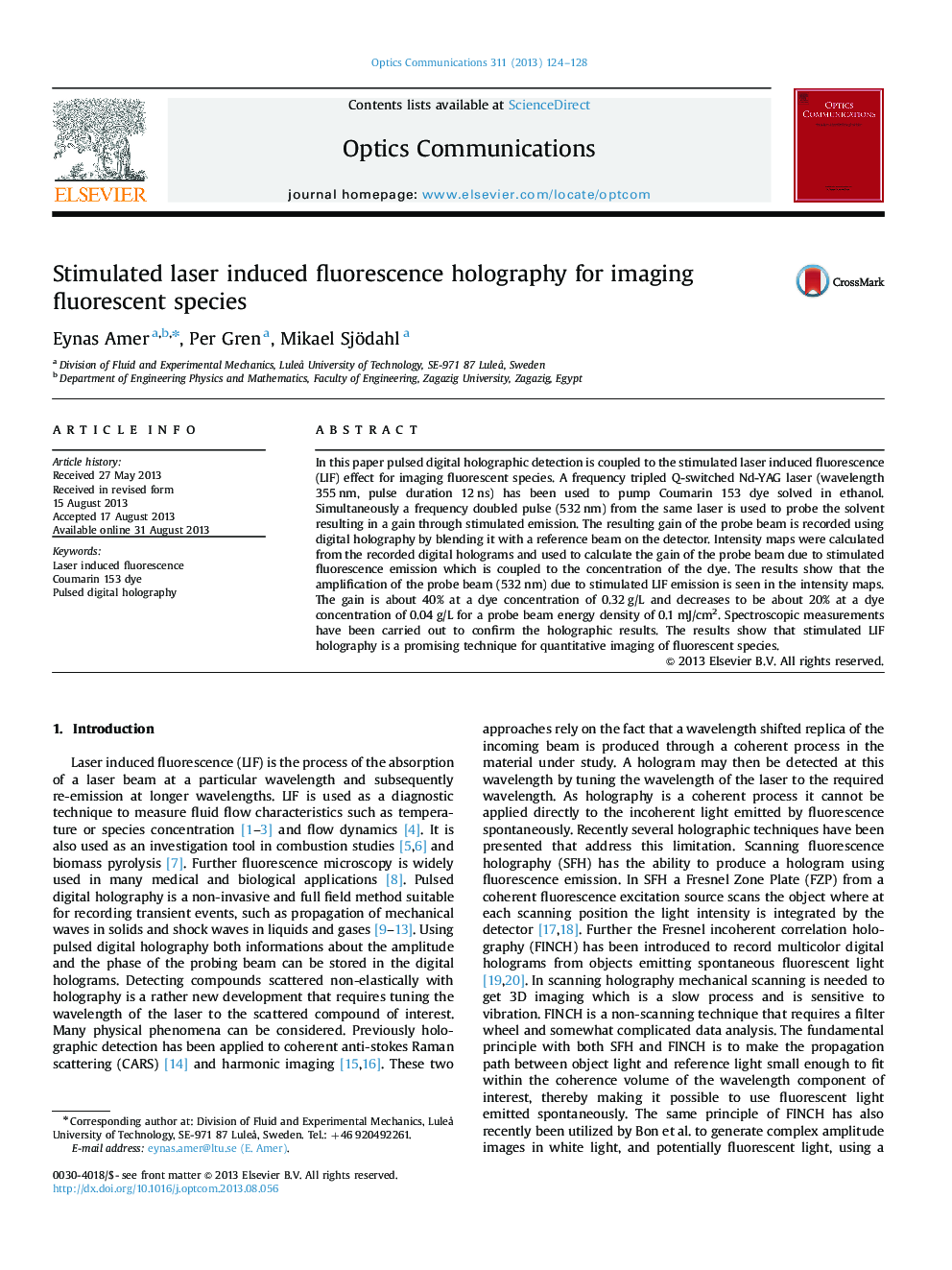| Article ID | Journal | Published Year | Pages | File Type |
|---|---|---|---|---|
| 7932157 | Optics Communications | 2013 | 5 Pages |
Abstract
In this paper pulsed digital holographic detection is coupled to the stimulated laser induced fluorescence (LIF) effect for imaging fluorescent species. A frequency tripled Q-switched Nd-YAG laser (wavelength 355Â nm, pulse duration 12Â ns) has been used to pump Coumarin 153 dye solved in ethanol. Simultaneously a frequency doubled pulse (532Â nm) from the same laser is used to probe the solvent resulting in a gain through stimulated emission. The resulting gain of the probe beam is recorded using digital holography by blending it with a reference beam on the detector. Intensity maps were calculated from the recorded digital holograms and used to calculate the gain of the probe beam due to stimulated fluorescence emission which is coupled to the concentration of the dye. The results show that the amplification of the probe beam (532Â nm) due to stimulated LIF emission is seen in the intensity maps. The gain is about 40% at a dye concentration of 0.32Â g/L and decreases to be about 20% at a dye concentration of 0.04Â g/L for a probe beam energy density of 0.1Â mJ/cm2. Spectroscopic measurements have been carried out to confirm the holographic results. The results show that stimulated LIF holography is a promising technique for quantitative imaging of fluorescent species.
Keywords
Related Topics
Physical Sciences and Engineering
Materials Science
Electronic, Optical and Magnetic Materials
Authors
Eynas Amer, Per Gren, Mikael Sjödahl,
